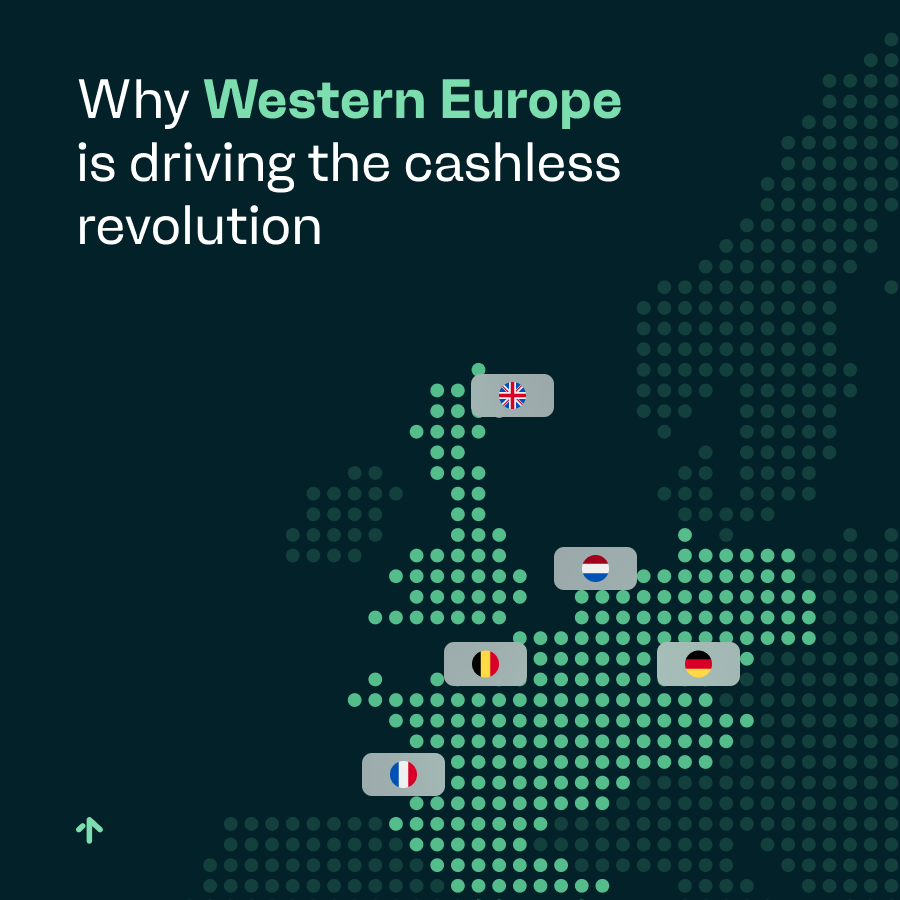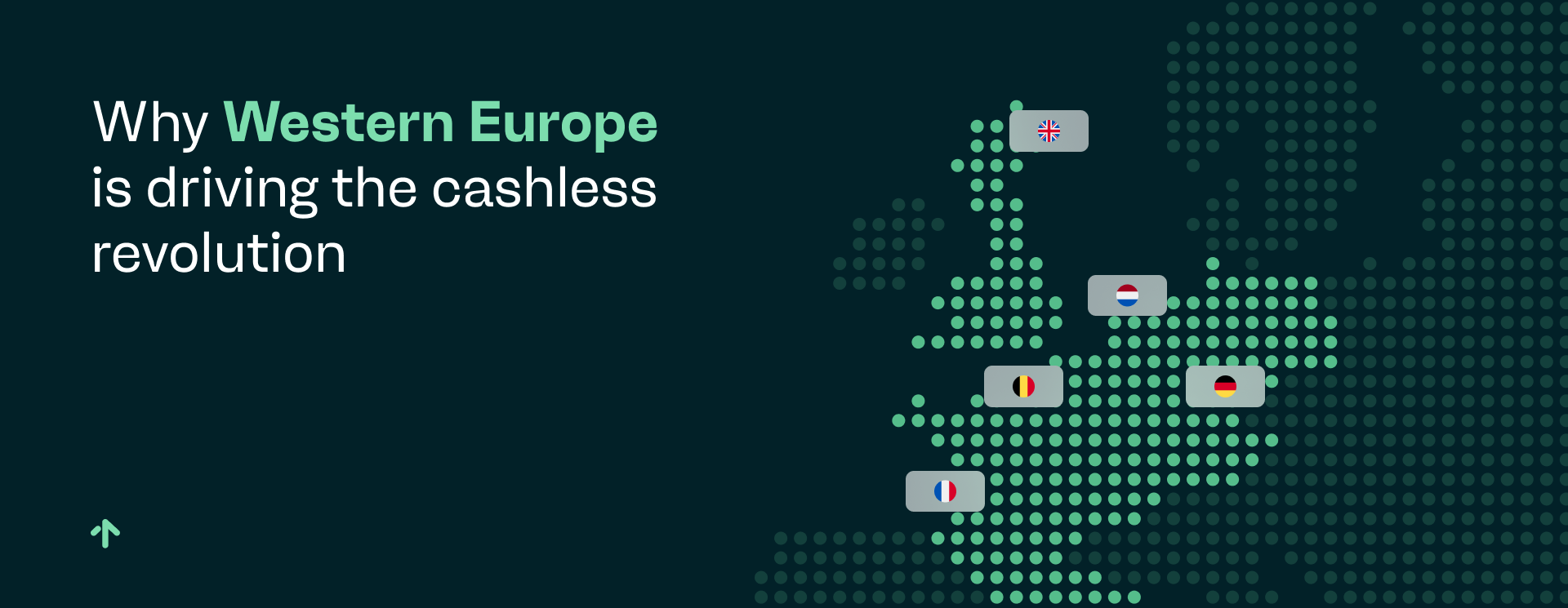
Western Europe has long been a center for innovation. Home to countries like England, France, and the Netherlands, the region is responsible for some of the continent’s most prominent thinkers and leaders of the last several hundred years. For payments, Western Europe is certainly leading the charge forward to a digital, cashless future, according to our most recent report.
It has also been a hotspot for technological reform, particularly for financial services. Regulatory frameworks like the Payment Services Directive, as well as collaborative networks like the European Payments Initiative (EPI), have close ties to Western Europe, making it an important region to watch for advancements in payment tech.
Western Europe’s payment trends set the tone for global financial services
The interconnected nature of Western Europe makes it a hub for cross-border e-commerce.
From 2023 to 2028, cross-border transactions within Europe will rise by a predicted 58%, driven primarily by the substantial and well-established economies of the nations of Western Europe.
Expansion into international jurisdictions has become a top priority for merchants in this region to broaden their customer bases. Achieving this growth necessitates seamless digital payments.
However, the goal of providing a seamless payment experience may be challenged by fragmentation.
Consumer payment preferences differ significantly in every market and region.
A 2024 study by the European Central Bank found that, for consumers in the Euro area, cash remains a vital part of the payment system but is decreasing in preference. Around 58% of consumers expressed concerns over their privacy during digital payment experiences, making security a critical factor for businesses and financial institutions to consider for digital solutions.
Bridging the gap between differing consumer preferences and concerns over digital payments requires greater interoperability, something the EPI aims to address directly with Wero, a solution for account-to-account (A2A) payments. Wero is designed to serve as a digital payment wallet first for peer-to-peer payments across European borders and eventually merchant, in-store, and recurring payments as well.
The collaborative approach we’ve taken since the beginning of the project ensures Wero meets and will continue to meet the diverse needs of European consumers and merchants by offering a secure, efficient, and innovative payment solution.” – Martina Weimert, CEO of EPI Company
A country-by-country breakdown of alternative payment methods
As mentioned, each country has different consumer preferences, especially when dealing with preferred payment methods. While cash and cards remain high on the list, a wide variety of alternative payment methods (APMs) are starting to take root across Western Europe:
- United Kingdom: The UK has witnessed higher consumer adoption of both BNPL services and digital wallets, particularly PayPal, Apple Pay, and Google Pay. Digital wallets took a large slice of the e-commerce market share in 2023, accounting for 38% of all e-commerce payments, while BNPL services have grown in popularity with younger consumers.
- Germany: Despite the phasing out of the online payment system Giropay in 2024, German consumers still have their eyes trained on digital alternatives, with digital wallets account for a massive 71% of transactions. The BNPL provider Klarna has gained significant traction thanks to its full integration with SOFORT, a pay-by-bank solution popular in Germany.
- France: French consumers are well-acquainted with digital payments and expect a variety of choices at checkout. Along with the popularity of digital wallets like Google Pay, Apple Pay, and PayPal in the country, French consumers also show a preference for local alternatives like PayLib. However, cards still account for 52% of transactions in France.
- Netherlands: The APM landscape in the Netherlands differs from other countries due to the strong presence of iDEAL, a Dutch solution for seamless and real-time bank transfers. iDEAL accounts for nearly 50% of all online transactions and is also a popular choice among Dutch consumers for offline payments like local taxes and invoices. For any merchant operating in or targeting Dutch markets, acceptance of iDEAL is an absolute must.
- Belgium: Like the Netherlands, Belgium also has its own favored payment method known as Bancontact, which allows direct payments from bank accounts. Bancontact also issues cards and accounts for 94% of all active debit cards in the country. Aside from Bancontact, Klarna has also risen as a popular APM, especially for cross-border e-commerce transactions.
Expansion into Western Europe requires digitisation and localisation
Though Western Europe still has a ways to go with building consumer confidence in digital payments, countries like the Netherlands and Belgium have shown that localised online and direct payment methods have immense potential for widespread consumer adoption.
Western Europe also leads the charge when it comes to collaborative cross-border initiatives, such as the EPI’s Wero project. As for the leading APMs across the region, we can identify three major ones to watch — digital wallets, BNPL services, and A2A payments.
Successful expansion into this region will require merchants to pay close attention to the shifting preferences of consumers, with a special emphasis on local APMs.
Want to know more about the current preferences and trends of not just Western Europe, but the entire European region as a whole?
Read our new paper, How Europe likes to pay: A region-by-region guide to APM adoption.
